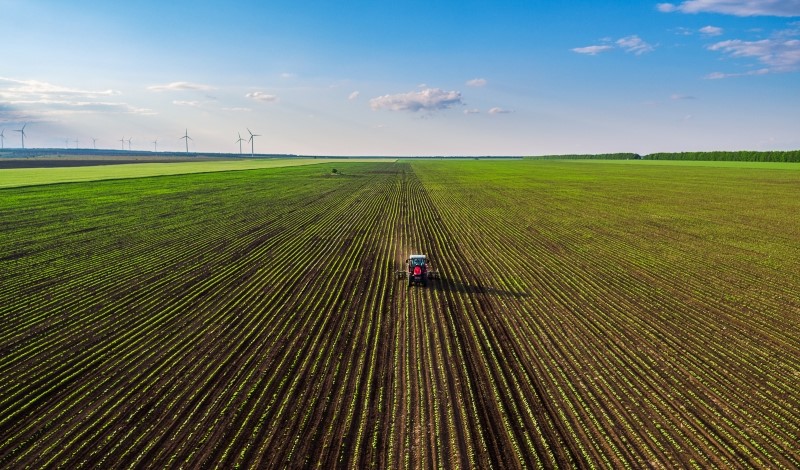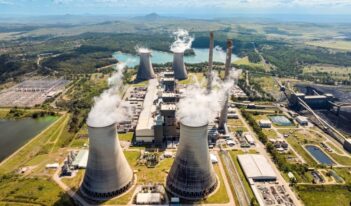
Scholars call for the development of solar energy on agricultural land.
Raging wildfires, catastrophic flooding, record-setting heatwaves. These are but a few examples of the consequences of climate change that scientists warn await the nation as a whole—progressive and conservative communities alike. Although policymakers call for collective action, the climate crisis has thus far only further reinforced political division, with progressives advocating aggressive climate policies that rural, more conservative states routinely reject.
But it need not remain this way, argue Hannah J. Wiseman, Samuel R. Wiseman, and Chris Wright, all at Penn State Law. Instead, as they explain in a recent article, policymakers can find political common ground by merging agricultural policy with climate policy. Specifically, Wiseman, Wiseman, and Wright propose that Congress reform the Agriculture Improvement Act—commonly known as the “Farm Bill”—and subsidize the siting of solar panels on the millions of acres of farmland the government currently pays farmers not to farm.
Wiseman, Wiseman, and Wright contend that siting solar panels on fallow farmland would not only accelerate the transition to renewable energy but also provide farmers with a more consistent—if not also an increased—source of income.
To develop the massive amount of zero-carbon energy necessary to combat climate change, policymakers must secure millions of acres of land for the siting of energy infrastructure and transmission lines. The amount of U.S. energy generation projected through 2040 will require the development of over 200 million acres of land—an area larger than the size of Texas.
The sheer amount of land required, however, is only part of the challenge given the high rates of local opposition to land use changes among both conservative and progressive communities.
Against this backdrop, Wiseman, Wiseman, and Wright urge policymakers to “treat climate law as inseparable from land use law” and foster local support for the development of renewable energy. The land-energy nexus, Wiseman, Wiseman, and Wright argue, need not be seen only as an obstacle to overcome. Rather, policymakers should regard it as a unique opportunity to bridge the “typically insurmountable divide between conservative and progressive values.”
To that end, Wiseman, Wiseman, and Wright propose that policymakers address the energy transition’s land needs by modifying existing federal statutory frameworks—namely, those provided in the Farm Bill. Under the Farm Bill, the federal government heavily subsidizes the farming industry, spending billions of dollars annually to shield farmers from volatile commodity prices and keep farmland out of crop production for conservation purposes.
A centerpiece of the Farm Bill is the Conservation Reserve Program (CRP), which pays farmers to stop farming on “environmentally sensitive” land and instead plant crops to reduce erosion or otherwise restore the land. The CRP allocates between $1.8 and $2.1 billion annually toward such payments and, as of 2022, encompasses 22.1 million acres of farmland. Once enrolled in CRP, farmers receive annual lease payments not exceeding $50,000 for up to 15 years.
Wiseman, Wiseman, and Wright call for a relatively modest reform that would prioritize land that can site solar panels for CRP eligibility, thereby encouraging farmers to enter into solar leasing agreements with developers. This reform does not depart radically from existing agricultural policy. The U.S. Department of Agriculture already provides guaranteed grants and loans to encourage the generation of solar energy on farms. Although some question the merits of subsidizing unproductive farmland, Wiseman, Wiseman, and Wright challenge the assumption that farmland must produce crops to be productive. They argue that fallow farmland is set to become increasingly more valuable as the land-intensive transition from fossil fuel energy to renewable energy proceeds.
Wiseman, Wiseman, and Wright emphasize that subsidizing farmland solar development provides a range of benefits not related to climate policy. In particular, the reform would increase financial support for struggling farming communities that wish to maintain their “agricultural heritage and rural identity.” Aside from the federal subsidies that farmers would still receive under the proposed reform, solar leases themselves offer a consistent, long-term source of income, one that can supplement—if not supplant—income from farming. Wiseman, Wiseman, and Wright note that leasing land to solar developers can be more profitable per acre than crop production, especially given the volatility of commodity prices.
Wiseman, Wiseman, and Wright propose that Congress could also subsidize the siting of solar panels on productive farmland because many crops can grow beneath solar panels. In fact, properly designed solar panels can serve as “agrophotovoltaic” systems that increase overall land productivity and protect crops against droughts. Likewise, evidence suggests that the presence of solar panels can accelerate the reclamation of degraded farmland.
Wiseman, Wiseman, and Wright see the transition’s need for land as the “key to unlocking a climate policy built on shared interests, even in the absence of shared beliefs.” By reforming CRP to match solar developers with fallow farmland, Congress can mitigate the climate crisis—and perhaps reduce political polarization as well.



